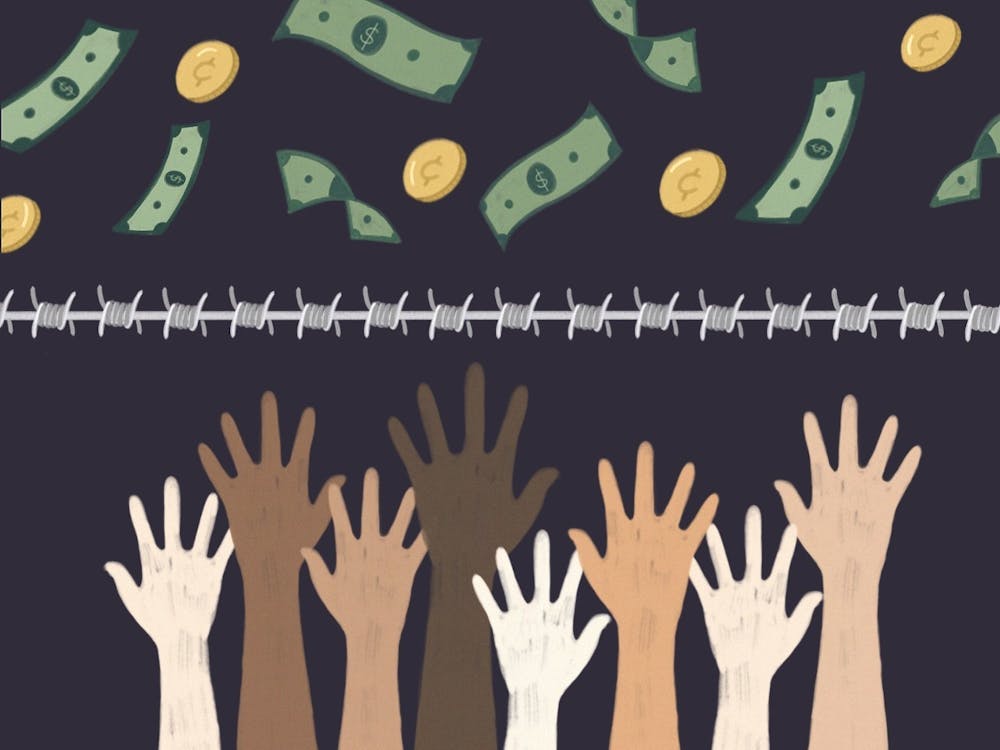What does it take to make a university accessible to students from all socioeconomic backgrounds?
Duke has expanded financial aid in recent years, and faculty and students continue to work to make the University more accessible. But some students say institutional barriers, including bureaucracy and a lack of public spaces for dialogue, make that work difficult.
According to The New York Times, 69% of students at Duke come from the top 20% income bracket. But though it is still not representative of the general American population, Duke has come a long way in recent years in supporting low-income students, including an expansion of financial aid.
Duke is “very different today than it was 20 years ago,” said Gary Bennett, vice provost for undergraduate education.
Duke launched its Financial Aid Initiative in 2005, bringing in funding from a range of donors. It reached its goal of raising $300 million by 2008, paving the way for improvements like eliminating parent contributions for students with a family income under $60,000 and reducing loans for students with a family income up to $100,000. Since 2008, the percentage of students receiving financial aid has increased from 45% to 52%.
Dean of Undergraduate Admissions Christoph Guttentag said that making Duke more accessible is one of the main goals of his office. He said a diversity of backgrounds makes for a stronger community where “work is done better.”
Bennett sees bringing together communities through intergroup dialogue as the greatest challenge of higher education. He said there is some “interchange of ideas across different types of groups” at Duke, and referenced Duke’s mandatory random roommate policy as an example of an opportunity for students of different socioeconomic backgrounds to interact.
But some first-generation, low-income students said it is difficult to make change.
First-year Brandon Huynh said that “most people don’t understand where you’re coming from” because it is impossible for them to experience it. It is hard to raise your voice when you are “surrounded by a bunch of people that are rich” and “you’re the only poor person in the friend group,” he said.
When one does speak up, educating other students places a burden on first-generation, low-income students, said junior Jamal Burns, co-president of Duke Low-Income, First-Generation Engagement. Burns said that despite approaching problems with a level of understanding and awareness, it can be frustrating at times trying to explain why something is “structurally classist.”
Another issue Huynh raised is the lack of “publicized spaces” to talk about these issues. Common Ground, a student-led fall break retreat that explores various identities, is an example of such a space, but Hunyh said he believes there should be more administrative effort to make these spaces instead of leaving it to students to create and run them.
Some students cite bureaucracy as a barrier to addressing the wealth gap. Burns argued that there are “so many loops and hidden policies [that students] may not know.”
Junior Kait Boncaro, who was Duke Student Government’s vice president of services and sustainability for the 2019-20 academic year, added that though administrators are “very much willing to listen to students,” there have been limits to moving forward with implementation of policies to help low-income students.
Boncaro worked on a DSG project that aimed to provide a way for students to receive University funding to pay for club dues, and she said she had to change her strategy to a “more bottom-up” approach because of institutional barriers.
Making institutional change last is even more difficult, Boncaro said, and requires students to create the infrastructure to sustain changes past their years at Duke.
This article is part of the wealth gap series. We are exploring how wealth impacts the student experience. Read about the project and explore the rest of the series.
Get The Chronicle straight to your inbox
Sign up for our weekly newsletter. Cancel at any time.

